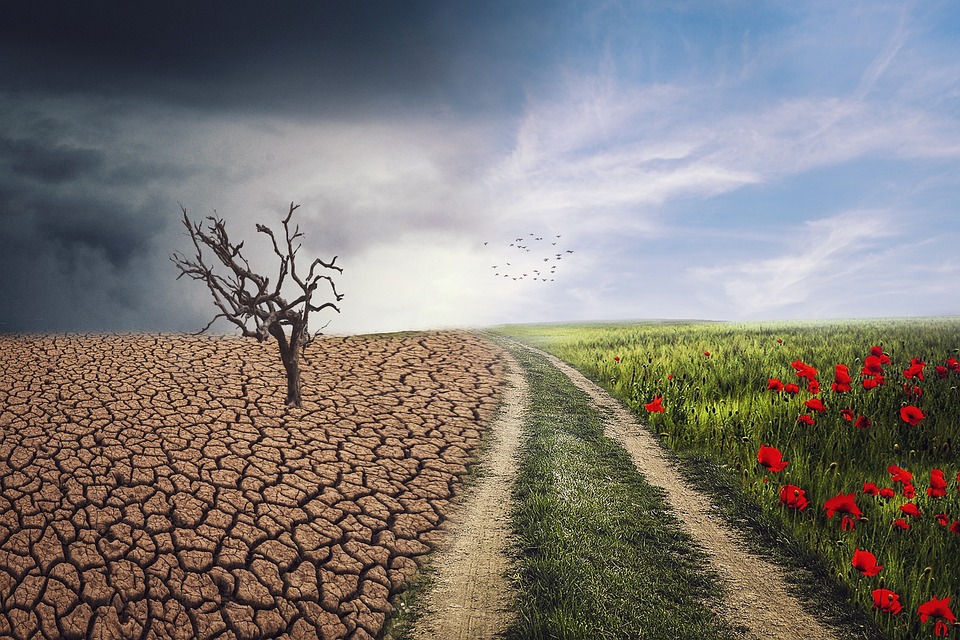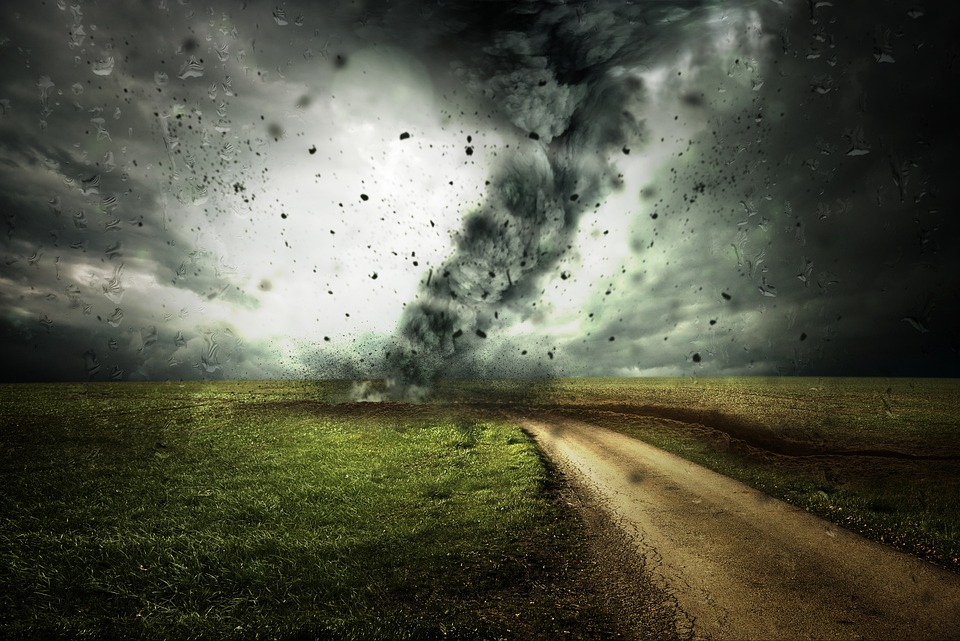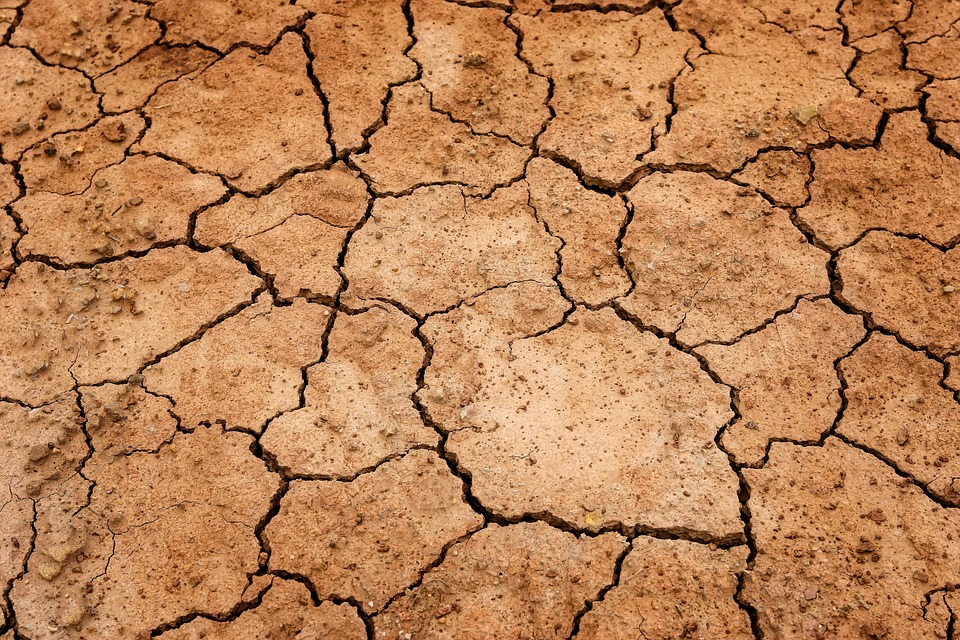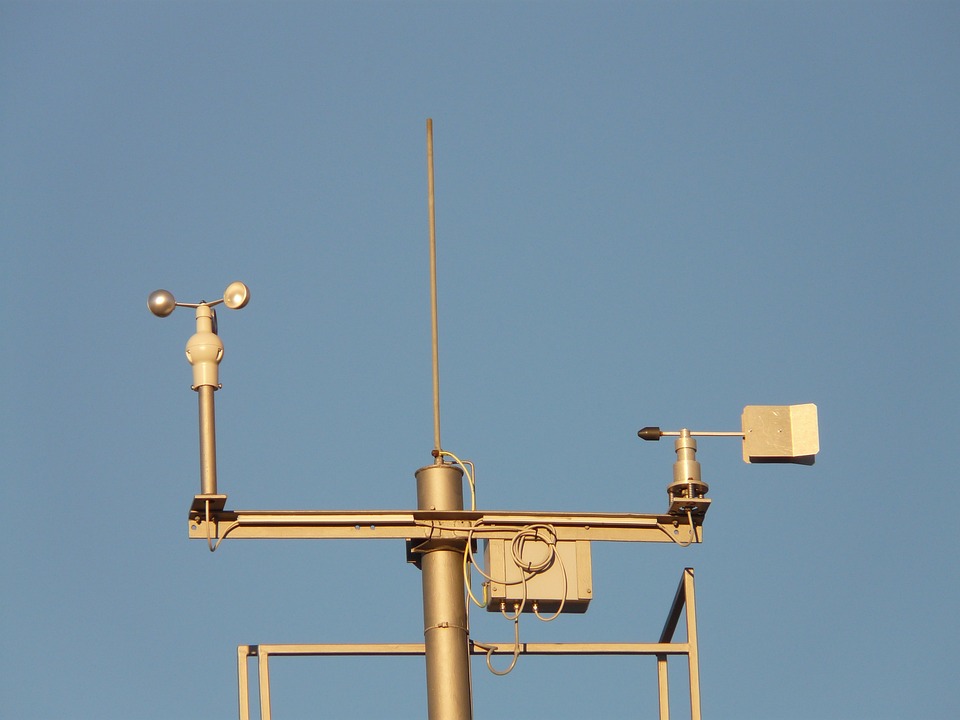The term “weather” describes the state of the atmosphere at a certain location at a specific moment. It consists of several components, including temperature, humidity, air pressure, wind, and precipitation. The interactions of the sun, atmosphere, and Earth’s surface determine how the climate behaves in different places.
Meteorologists utilize several instruments and methods to detect, gauge, and forecast weather patterns. Meteorology is the study of weather. This covers the application of satellite and radar technology as well as ground-based equipment like thermometers and barometers.
The effects of the cloud cover on ecosystems, the environment, and human activity can be profound. For instance, catastrophic weather conditions like hurricanes, tornadoes, and droughts can result in serious harm and fatalities. However, favorable cloud cover can also be advantageous for other industries such as agriculture, outdoor recreation, and others.
The weather, a complex and ever-changing phenomena, has a significant impact on the environment we live in.
The science of weather
The study of the Earth’s atmosphere and its different elements, such as temperature, pressure, moisture, and wind, is the field of meteorology. The science of weather is another name for it. Moreover, meteorologists utilize a variety of instruments and methods to examine and comprehend the atmosphere. This is a complicated system that is always changing.
Temperature, a gauge of the average kinetic energy of the molecules in the air, is one of the major factors that affect the weather. The quantity of sunlight the Earth receives, the tilt of the Earth’s axis, and a specific location’s altitude are just a few examples of the many variables that can affect temperature.
Another vital element of the cloud cover is air pressure, which has a big influence on precipitation and wind patterns. Temperature, altitude, and the Earth’s rotation are just a few of the variables. These can affect air pressure.

Science
In addition to being a crucial element of weather, moisture can also affect temperature and precipitation amounts in a given area. A hygrometer can measure moisture and relative humidity. It is the ratio of the quantity of moisture in the air to the maximum amount that the air could contain at a specific temperature. Furthermore, is commonly used to express moisture.
Air pressure, which greatly affects precipitation and wind patterns, is another essential component of the weather. A barometer helps to measure air pressure. This is influenced by several factors, including temperature, altitude, and the Earth’s rotation.
Moisture is an important component of weather. In addition, can have an impact on local temperature and precipitation totals in addition to being a major factor in cloud cover. Relative humidity is a common way to represent moisture and may be calculated with a hygrometer. It is the ratio of the amount of moisture in the air to the maximum amount that it could contain at a given temperature.

Climate change
The term “climate change” describes the gradual changes in global temperature and weather patterns brought on by human activity. Particularly the generation of greenhouse gases like carbon dioxide and methane. Rising sea levels, catastrophic climate events, and altered precipitation patterns are just a few of the effects of climate change. They have a substantial and growing influence on society and the environment.
The temperature of the Earth has changed throughout millions of years as a result of some events. To illustrate, volcanic eruptions, modifications to the Earth’s orbit, and variations in the quantity of solar radiation that the planet receives. However, the burning of fossil fuels, deforestation, and agriculture are the main causes of the current rapid pace of climate change.
Fossil fuels like coal, oil, and gas are used to release carbon dioxide into the atmosphere, which traps solar heat and raises Earth’s temperature. The greenhouse effect, which is the main cause of climate change, is a process. Agricultural and livestock agricultural operations, for example, both produce methane, another greenhouse gas.
Rising sea levels, glacier melting, and altered precipitation patterns are just a few of the environmental effects of climate change that are resulting in more frequent and severe droughts, floods, and storms. These impacts are also having substantial social and economic consequences, including relocation from coastal communities, impacts on food production and water sources, and increased disease risk.
Climate change initiatives include lowering greenhouse gas emissions by using renewable energy sources, such as solar and wind energy, and by improving energy efficiency. Reforestation and eco-friendly agricultural methods are other tactics. International accords have also been developed by the United Nations Framework Convention on Climate Change (UNFCCC), such as the Paris Agreement, to urge nations to cooperate in the fight against climate change.

Extreme weather events
Extreme weather phenomena are dangerous and uncommon weather occurrences that take place outside of the ordinary range of outlook patterns in a certain area. These occurrences may have a major effect on both humans and the environment. Consequently, leading to loss of life, injury, and property damage. The natural unpredictability of the climate system, human-caused climate change, and regional cloud cover patterns. These are only a few of the causes of extreme weather occurrences.
Storms including hurricanes, tornadoes, floods, droughts, heat waves, and blizzards are examples of extreme weather. Large, spinning storms called hurricanes. This can seriously harm coastal regions due to storm surges and high winds when they form over warm ocean waters.
Rotating columns of air known as tornadoes is extremely destructive. Tornadoes have the potential to seriously harm nearby buildings and infrastructure. Floods happen when there is too much water in one place.
A lot of rain can trigger them. Furthermore, a lot of snow melting quickly, or a dam or levee failing. A protracted period of extremely low rainfall can cause droughts, which affect agriculture and the environment by causing water shortages.

Extremity
Human-caused climate change has the potential to exacerbate extreme weather events by increasing the frequency and intensity of heat waves, droughts, and wildfires. Increased flooding and landslides may result from more frequent extreme precipitation events. The effects of hurricanes and coastal storms can be made worse by the rise in sea level brought on by the melting of glaciers and ice sheets.
Early warning systems, emergency response strategies, and infrastructure upgrades are all part of the effort. This comprises being ready for and responding to extreme weather disasters. Enhancements to building rules, such as mandating that buildings be more wind and flood resistant, can also aid in minimizing damage from extreme weather occurrences.
The severity and frequency of future extreme weather events can be decreased by measures to lessen greenhouse gas emissions. This will also assist to alleviate the effects of climate change.
Weather forecasting
The practise of predicting the future state of the atmosphere using a variety of tools and methodologies based on scientific principles is known as weather forecasting. The purpose of weather forecasting is to warn the public and decision-makers in a timely manner. This is about impending weather conditions so that they can make wise judgements and take the necessary precautions. This paves way to protect themselves and their property.
Data on the current weather are gathered using a number of tools. This includes weather balloons, satellites, and ground-based sensors, in the process of weather forecasting. Then, using sophisticated mathematical techniques, the behaviour of the atmosphere over time is simulated. Consequently, they feed this data into computer models.
These models are capable of accounting for a large number of variable. For instance, temperature, humidity, air pressure, wind direction and speed, cloud cover, and precipitation.
Prediction
Forecasters analyze the output of these models. They take into account, additional information such as historical weather patterns. In addition, expert knowledge of local weather conditions, to produce a forecast. The forecast typically includes information on temperature, humidity, wind, and the likelihood of precipitation. Moreover, along with any warnings or advisories for severe weather conditions.
Weather forecasting is an ongoing process, with forecasters constantly monitoring changes in weather patterns. Furthermore, updating their predictions as new data becomes available. Forecasts can range from short-term, hourly predictions to longer-term forecasts covering days or even weeks into the future.
Recent advancements in computer modelling, satellite technology, and the accessibility of real-time data from weather sensors throughout the world have all contributed to a major increase in the accuracy of weather forecasting.
But forecasting is still a difficult task. This is because, the behaviour of the atmosphere is highly variable. Moreover, subject to a variety of variables that can make it challenging to predict with absolute certainty.
Weather and Human health
Extreme temperatures, air pollution, and severe weather events all pose potential threats to human health. Consequently, can have a substantial impact. A variety of health issues, such as respiratory and cardiovascular disease, heat illness, and injuries from severe weather events, can arise from exposure to these weather-related dangers.
Heat waves and cold snaps are both linked to higher death and morbidity rates. This makes extreme temperatures a potential threat to human health. Heat waves increase the risk of heat-related illnesses like dehydration, heat exhaustion, and heat stroke. Cold temperatures raise the danger of hypothermia, frostbite, and other cold-related injuries. Extreme temperature effects on health can be especially harmful to some groups of people. This comprises of the elderly, small children, and people with pre-existing diseases.
Air pollution, which can be exacerbated by certain weather conditions, is another significant risk to human health. Exposure to pollutants such as particulate matter and ozone can cause respiratory problems, cardiovascular disease, and other health problems. Severe weather events, such as wildfires and dust storms, can also cause spikes in air pollution levels. Thereby, increasing the risk of health problems for people exposed to the pollutants.

Health
Weather has direct effects on human health. However, it can also have indirect effects on health through affecting the transmission of infectious diseases. For instance, regions with warmer temperatures and higher humidity levels have higher populations of particular mosquito species that spread diseases. For instance, malaria and dengue fever. Changes in temperature and precipitation patterns can have an effect on the spread of cholera and other water-borne diseases.
Early warning systems for extreme temperatures and severe weather events, as well as public health campaigns to raise awareness of the risks associated with these hazards, are efforts to address the health effects of weather-related hazards.
The detrimental impacts of air pollution on health can be mitigated through advancements in air quality monitoring and management. Additionally, by lowering the frequency and severity of extreme weather events and air pollution, efforts to combat climate change can aid in reducing the long-term health effects of weather-related hazards.
Weather and Agriculture
Weather has a significant impact on crop growth and yields, livestock health, and other aspects of agriculture. Different crops have particular weather needs for optimum growth. Crop failure or lower yields may occur if these requirements are not met.
Important weather factors that can have an impact on agriculture include temperature, precipitation, humidity, and wind. For instance, crops require a certain range of temperature and moisture. Moreover, the departures from these requirements might impact growth and development. Additionally, wind can harm crops or prevent pollination. Consequently, too much or too little rainfall can also have an impact on crop growth.
When deciding how to plant, harvest, and conduct other agricultural activities, farmers and agricultural experts consult weather data. Farmers can use weather forecasts to prepare for irrigation, fertilisation, and pest management. It also helps them to decide whether to plant specific crops during a particular season.
In addition, weather monitoring and early warning systems can aid farmers in preparing for extreme cloud conditions. This includes droughts, floods, and storms, which can have a substantial impact on livestock and crops.

Agriculture
Changing weather patterns and an increase in the frequency of extreme weather events are having an effect on crop yields and livestock health. This is another effect of climate change on agriculture. For instance, changes in precipitation patterns and temperature may have an impact on agricultural growth. On the other hand, more frequent droughts and floods may result in lower crop yields and greater soil erosion. Changes in temperature and rainfall patterns influences the timing of planting and harvesting. Consequently, impacts crop yields and farmer profits.
In order to overcome these difficulties, farmers and agricultural specialists are investigating fresh methods. This is mainly for adjusting to altering weather patterns and reducing the effects of climate change on agriculture. These tactics include creating new crop types that can withstand heat and drought better. Furthermore, enhancing irrigation techniques, and using sustainable farming methods that help to lower greenhouse gas emissions and enhance soil health.
Relation between weather, travel and technology
Technology advancements have made travel safer, more dependable, and more efficient, and they have also made weather forecasting and monitoring more accurate. As a result, there is a direct connection between weather, travel, and technology.
Transporting people and goods around the world has undergone a radical transformation as a result of the development of automobiles, railroads, and other forms of transportation technology. Extreme weather conditions like hurricanes, blizzards, and thunderstorms can affect travel by causing airline cancellations, delays, and other issues.
Advancements in cloud cover monitoring and forecasting technologies aids the ability to better plan for weather disruptions and inform passengers of delays and cancellations. Airlines and other transportation companies use them.

Pilots use real-time cloud cover information to decide on routes, altitude, and speed, and meteorological technology is crucial to aviation safety. Pilots can predict and steer clear of potentially hazardous climate conditions thanks to weather radar, satellite photography, and other weather monitoring equipment, which lowers the likelihood of accidents and boosts safety.
Other sectors that rely on weather data, such as agriculture, energy production, and construction, are equally as dependent on weather technology as the transportation sector. These industries can make well-informed decisions about, among other things, controlling energy production, planning construction projects, and planting and harvesting crops thanks to outlook forecasting and monitoring software.
New weather forecasting and monitoring technologies, such as highly accurate weather models and sophisticated weather satellites, have also been made possible by technological advancements. Better outlook forecasting and more accurate monitoring of forecast-related dangers are made possible by these instruments’ more exact and thorough cloud cover data.

Travel and Technology
The connection between climate, transport, and technology is also taking on more significance in the context of climate change. Transportation and other sectors will need to rely on weather technology to assist reduce the effects of extreme weather on their operations and on society as a whole as climate change leads to increasingly frequent and severe outlook occurrences.
Overall, there is a complicated and nuanced interaction between climate, travel, and technology. As technology has advanced, transport has become more dependable and efficient, and predicting and monitoring of the weather have also advanced. The link between climate, travel, and technology will continue to influence how we live, work, and interact with our surroundings as technology develops.

Conclusion
In conclusion, weather is a complex and constantly changing system that has a significant impact on various aspects of human life, including health, agriculture, transportation, and recreation. Understanding the science of weather and its various components, such as temperature, precipitation, wind, and pressure, is crucial for accurate forecasting and preparing for different cloud cover conditions. Unphenomenal weather conditions, such as clear skies, mild temperatures, and light winds, are important for everyday life, while unusual forecast phenomena, such as hurricanes, tornadoes, blizzards, heat waves, and droughts, can have a significant impact on the environment and human life.
Technology advancements have significantly increased our capacity to track and anticipate cloud cover conditions, providing crucial data for emergency situations and decision-making in numerous industries. Climate change, as well as its consequences on weather patterns and extreme weather events, must be carefully evaluated and managed in order to decrease its negative effects. Overall, keeping an eye on the cloud cover is essential for ensuring our everyday safety, productivity, and quality of life.
